Cable cross-section for washing machine
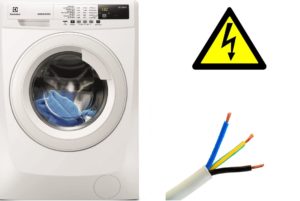 When preparing for a major renovation of a kitchen or bathroom, it is very important to think ahead about the composition and location of electrical and other communications. Even if you cannot predict in advance what equipment will be installed in these premises, still think ahead. If you are going to install an automatic washing machine in the bathroom or kitchen, think in advance about laying a separate wire for it, and even a wire of a suitable cross-section. For what? Let's talk about this in this publication.
When preparing for a major renovation of a kitchen or bathroom, it is very important to think ahead about the composition and location of electrical and other communications. Even if you cannot predict in advance what equipment will be installed in these premises, still think ahead. If you are going to install an automatic washing machine in the bathroom or kitchen, think in advance about laying a separate wire for it, and even a wire of a suitable cross-section. For what? Let's talk about this in this publication.
Do you need a separate outlet?
To begin with, let’s answer the user’s natural question about why an automatic washing machine needs a separate, and even protected, electrical line, which, moreover, does not come from the distribution box, but directly from the panel? As you know, an automatic washing machine cannot:
- connect to the outlet via an extension cord;
- connect to an outlet to which a large consumer is already connected;
- connect to a weak outlet with unreliable wiring.
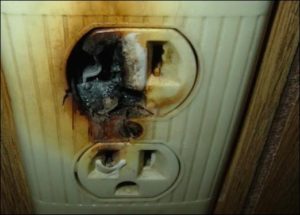 Why such restrictions? It’s all very simple - an automatic washing machine is a large consumer of electricity, creating a large load on the power grid. The wire experiences the heaviest load at the moment when the washing machine starts the spin program at high speeds. In such situations, the aluminum wires of the socket to which the washing machine is connected, which have a small cross-section, overheat and may well cause a fire.
Why such restrictions? It’s all very simple - an automatic washing machine is a large consumer of electricity, creating a large load on the power grid. The wire experiences the heaviest load at the moment when the washing machine starts the spin program at high speeds. In such situations, the aluminum wires of the socket to which the washing machine is connected, which have a small cross-section, overheat and may well cause a fire.
There is only one solution in this case - before making repairs in the room where the automatic washing machine will be located, lay a separate wire of a suitable cross-section, made of a suitable material, directly from the panel, which will power a moisture-resistant outlet. This outlet will power your home assistant. If you do it differently, you risk starting a fire in the house or, at a minimum, damaging expensive equipment.
If in the same room you plan to connect, in addition to a washing machine, also a dishwasher, you don’t have to lay a separate line for it, just take a large-section copper wire (with a reserve) so that you can then power the second outlet from it.
Wiring and other components
 First of all, you need to decide which wire to use. Namely, what cross-section will it have, how many cores will it have, and what material will it consist of? Let's start with the material. Experienced electricians do not recommend using aluminum wires to connect large consumers, and in general they say that wires made of such material should only be chosen as a last resort. Therefore, there is not much choice - we take copper wire.
First of all, you need to decide which wire to use. Namely, what cross-section will it have, how many cores will it have, and what material will it consist of? Let's start with the material. Experienced electricians do not recommend using aluminum wires to connect large consumers, and in general they say that wires made of such material should only be chosen as a last resort. Therefore, there is not much choice - we take copper wire.
Next you need to decide on the number of cores. According to technical regulations, any modern washing machine has a grounded power cord, which means we need to make a grounded socket for the washing machine. This means that we just need to take a wire with three cores: one core is phase, the second is zero and the third is ground.
Now you need to calculate the cross-section of this three-wire wire that will power the outlet for the washing machine. We, of course, could give you a table that shows the wire cross-section, current and power for which a cable of the appropriate thickness is designed, but we will not do this.Firstly, the average power of any modern automatic washing machine is 2500 kW. Secondly, we had already agreed earlier that we would take a wire that has a power reserve, you never know what will happen in the future.
Therefore, guided by our own conclusions and relying on the opinion of authoritative experts, we take a three-core copper wire (cross-section 2.5 mm), with good insulation. In addition to the wire, we will need:
- moisture resistant socket;
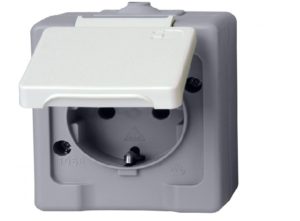
- difavtomat;
- copper terminals and socket box;
- plastic cable channel.
A moisture-resistant socket is necessary, since the automatic washing machine is used mainly either in the bathroom or in the kitchen, and these are rooms where dampness and moisture reign. The difavtomat will provide universal protection against failures that periodically occur in the imperfect Russian energy system. Select an automatic circuit breaker (RCD) for a washing machine The publication of the same name posted on the site will help you. Copper terminals are needed to ensure a reliable connection between parts of the electrical wiring, but it is better to do without connections at all.
Under no circumstances should you ever connect a copper wire to an aluminum one. Such savings will most likely damage electrical appliances powered from this network and may cause a fire.
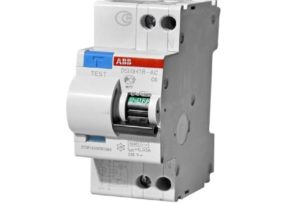 To install a socket that is expected to bear a large load, take only the highest quality sockets. There have been cases when cheap plastic socket boxes caused a fire. It is also better to take a plastic cable channel of the highest quality.
To install a socket that is expected to bear a large load, take only the highest quality sockets. There have been cases when cheap plastic socket boxes caused a fire. It is also better to take a plastic cable channel of the highest quality.
Some electricians do not see anything wrong with laying the cable directly into the trench cut into the wall, because it has insulation.In our opinion, it is better to protect the wire additionally with a cable duct, you never know what situations may happen, because the electrical network will function for decades.
We pull electrical communications
Before stretching and connecting the cable, you need to determine the most advantageous location of the outlet. It is important to consider not only the height at which the outlet will be placed, but also its distance from the distribution board. You need to understand that the further the socket is from the switchboard, the higher the cost of components and the more you will have to trench the wall for the wire, and trenching is a very labor-intensive job.
Having laid out the route for the cable, mark it with a marker directly on the wall, also mark the place where you will need to drill a hole for the socket box. Further actions will depend on what material the wall in which the gutter needs to be made is made of.
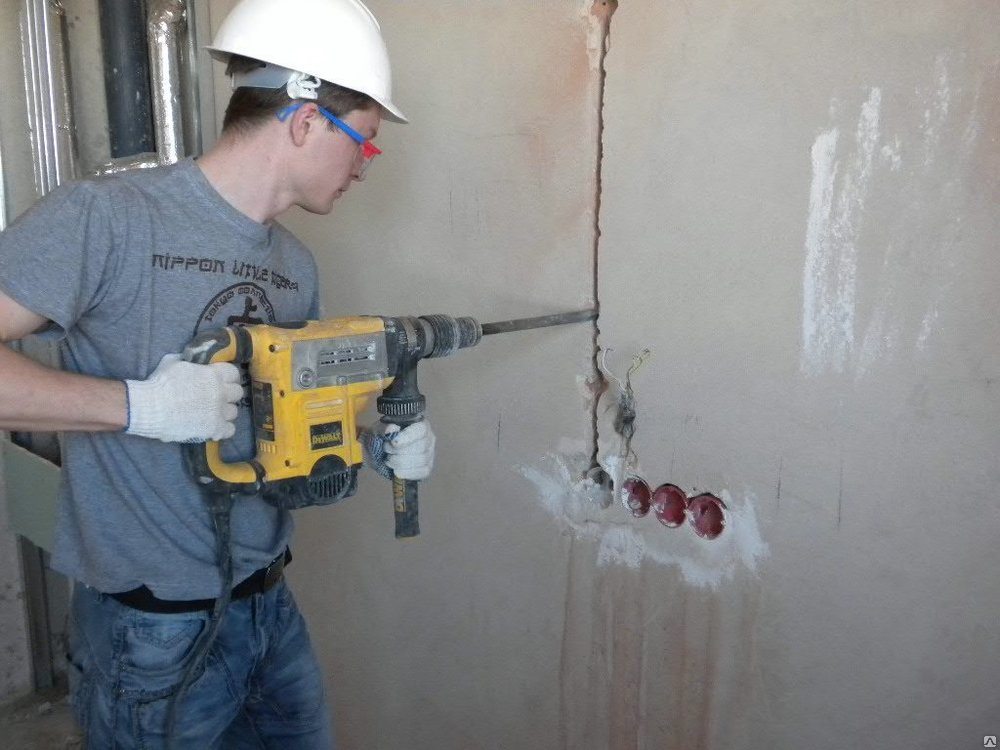
If the wall is made of soft material, then gating can be done the “old fashioned way” using a hammer and chisel. If the wall is made of reinforced concrete, you will have to use a hammer drill and a grinder. We use a hammer drill to drill holes along the future gutter, and then connect them with a chisel and hammer. On the way we will definitely come across reinforcement. It is not advisable to pass a wire under it, so to partially remove it we will use a grinder.
We begin to pull the electrical cable from the panel to the outlet. We outline the connection points for the electrical cable (phase, neutral, ground), but we will not connect the wire yet. We will also have to install a difatomat in the shield. We run the neutral and phase wires through the difatomat, and connect the ground separately.
It would not be amiss to remind you that all connections must be carefully insulated.
We take the wire out of the electrical panel and pull it along the dug channel. At the same time, you can place a plastic cable channel in the grooved channel, enclosing a copper wire in it. Having brought the wire to the installation site of the socket, we leave it alone for now and move on to installing the socket itself.
- Use a hammer drill to drill a hole in the socket box (for convenience, you can use a special drill).
- We insert the socket box into the recess and “seat” it with cold welding or sealant.
- We bring the ends of the wires into the socket box.
- We unpack the new moisture-resistant socket and take out its “guts”.
- We connect the phase, neutral, and ground wires to the corresponding contacts of the socket.
- We fix the base of the socket in the socket box so that it “sits” firmly and does not dangle.
- We screw the plastic part of the socket and make sure that nothing is loose.

That's almost all. All that remains is to connect the phase, neutral wire and ground in the electrical panel and check the outlet by connecting, for example, a table lamp to it. You can use a tester to check whether there is power in the washing machine outlet. If the socket works normally, then we finally need to put the wall in order by covering up the dug-out recess with the wire and cable channel laid in it.
In conclusion, we note that electrical communications for the automatic washing machine should be taken care of in advance. It is important not only to choose the right wire, but also to plan the placement of the line, as well as its protection. If you are not confident in your electrical skills, it is better to call a specialist who will help you lay the cable and connect the outlet. Good luck!
Interesting:
8 reader comments

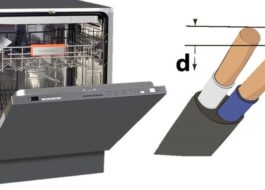


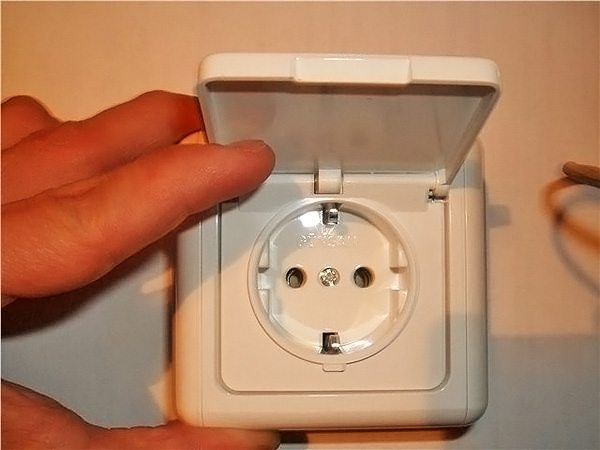
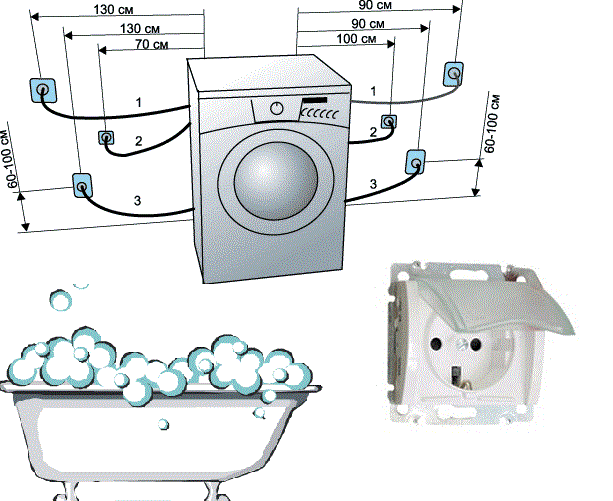
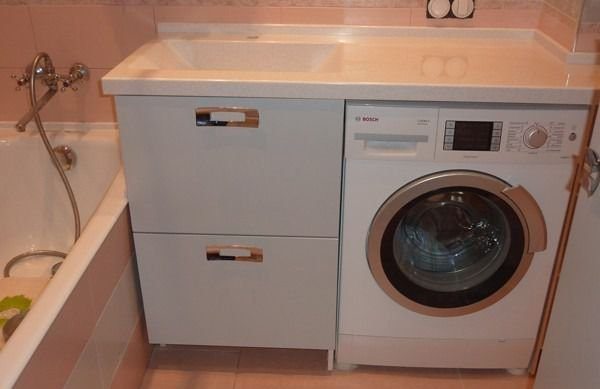














The washing machine consumes the greatest current when heating water for washing, and during spinning - no more than 1A (depending on engine power).
Certainly.
The washing machine consumes the most power when it heats water, and not when it spins things.
Typo. 2500 W, not kW.
I also noticed, 2.5 MW is an incredible machine.
At the expense of 2500 kW - I smiled...
Is it worth taking a three-core cable for an apartment (with grounding)?
It is forbidden to tap walls; this can lead to the destruction of the house.